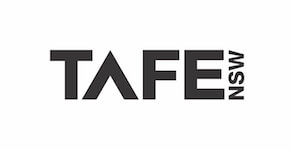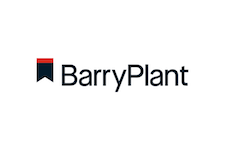In all business environments, you are met with a range of different skill sets and personality types. Each has their own communication style and preferred working process. Although we are all aware that we are all different, it is rarely focused on as an advantage and we tend to occupy our time focusing on the disadvantages of working with someone different from you.
If you have a team that is exactly alike, where everyone talks the same, has the same skills and approaches tasks in the same way, then you are actually at a disadvantage. The diversity of talent in your team is key to the success of becoming a high-performance team.
What is a High-Performance team?
Wikipedia defines a high-performance team well: “A group of people with specific roles and complementary talents and skills, aligned with and committed to a common purpose, who consistently show high levels of collaboration and innovation and produce superior results.”
Team building events are the perfect way to showcase the different personality types and superpowers within your team. Almost all team events are outcome driven. This gives the team a clear common purpose or goal. Team building events are a fun and safe way for teams to appreciate each other while moving towards a common goal and learning behaviours akin to a high-performance team.
To be effective when building a high-performance team, the understanding of individual working styles is important. There are many personality profiling tools, but they are all pretty similar when you break them down. The DISC method of personality profiling tool is very well known and has 4 simple personality types – one for each letter of DISC. For simplicity, we will use this profiling model to identify the possible personality types in your team. See the end of the article for a link where your team can do a DISC personality test for free in the space of 20 minutes.
Example of how a Team Activity can positively showcase the effectiveness of a diverse team.
Here we are going to use an example of a very popular team event like the Amazing Race or Scavenger hunt to highlight how each of the DISC personalities might react on a team event.
An Amazing Race or Scavenger Hunt has a clear objective: to complete a set of mandatory challenges either as quickly as you can, or in order to get as many points as you can. Good team building companies leave teams the task of choosing the order in which they wish to complete the various tasks. There is always a mix of engaging and inclusive challenges to showcase the various skill sets within the group: decoding riddles, construction challenges, creative challenges, timed food relays, photo challenges, trivia and problem solving. There needs to be a great variety of challenges so everyone gets their chance to shine.
How the Disc Personalities and strengths and weaknesses will come in to play in this scenario
D – Dominant
Positive
– Dominant people are great leaders that back themselves and are very decisive.
– Dominant people have no problem approaching people in the street and asking them to partake in a challenge. They usually have the ‘gift of the gab’.
– Dominant people are goal-oriented and their natural competitiveness is put on show and appreciated.
– Dominant people have a can-do attitude
Negative
- They generally lack attention to detail and, although they love to control,the multiple moving and changing components in the game will likely confuse and even frustrate them.
- They are oftenthe first to give up if they haven’t done well in a particular challenge, or if they feel they are losing overall.
I – Influential
Positive
- Influential people love thinking outside of the box and are open to new challenges and new ways of thinking.
- They are generally creative in their approach to things. Natural innovators and the intrapreneurs in the group.
- When committed to a short-term task they don’t give up easily.
Negative
- They are often not-so-good with time management.
- They are less likely to prioritise tasks that will benefit the greater good, they like to focus on what they are good at.
S- Steady
Positive
- Steady peopleare the do-ers in the group – the implementers of ideas.
- They are task-orientedand are practical in their approach to doing the challenges. They love lists and naturally prioritise.
- They have a great understanding of the personalities in the group and love the human connection.
Negative
- They can get distracted by the needs of other personality types.
- They don’t necessarily like coming up with ideas.
C – Conscientious
Positive
- Conscientious peopleare analytical and detail-oriented.
- They are great listeners.
- They love rules and show integrity – They will have a very clear idea of how the game is meant to work and the task at hand.
Negative
- They are not leaders and can find it hard to express their opinion.
- Even if they are good at something they are more likely to hold back if someone has already volunteered for a task.
How the different personalities complement each other
As the game plays out, the team will realise how important it is to have different personalities within the group, and how opposing behaviours can actually work to complement each other.
For example,
The Dominant style Personality is ‘gung-ho’ and loves to lead. The Conscientious type does not like to lead. But where the Dominant type has only really understood a basic concept of the game and its intricacies, the Conscientious type knows everything there is to know about the game. This forces the conscientious person to want to be heard as they are all about the rules and the details. Because the Dominant person and the conscientious person want to win. Possibly more than the other personality types their combined goal forces communication and appreciation of each other and what each brings to the table.
Steady and Influential personalities also find a compromise and a way to complement each other. The Influential person will be busy coming up with unique and wonderful ways to deliver a result that will be better than the other teams and win them bonus points, but they may do this without prioritising tasks. This is where the Steady person comes in. They have a keen awareness of the overall time allocated to complete all tasks and are therefore able to help manage the time for the influential person and ensure calculated decisions are made based on the desired time spent on each of the challenges in comparison to the points up for grabs.
All of these elements will play out in the game. By talking about personality types and what a high-performance team is at the start of the game, this premise then becomes something they actively think about during the game, and something they will talk about after the game and for the months following the game.
How do the key factors of a High Performance Team play out during team building events using the example of an Amazing Race or Scavenger hunt
Within a High Performance Team, people are highly skilled and able to share information and interchange their roles. Everyone has a different set of skills and priorities. These skill-sets ensure that the group has a variety of ears and eyes that are there to take in information and focus on the task at hand. This is constantly re-evaluated and prioritised, often by different participants within the team at any one time. With so many moving parts and with it being a new challenge for them, we see the importance of clear communication, delegation and ownership of the tasks at hand.
Also, leadership within the team is not necessarily for a single individual. Instead, the leadership role is taken up by various team members, according to the need at that moment in time. No one individual can carry the entire team, with so many components used to make the game varied, fun and competitive. Different skill sets are required to do well in the various tasks. Different team members will put up their hand to take the lead on various challenges. E.g, – The Dominant person will put themselves out there and do the more embarrassing tasks, whilst also driving and pushing the group. The Influential person will excel at creating photos, construction challenges, and other ‘creative’ challenges. The Steady person will ensure that all is being done effectively in the given timeframe, and tend to hold onto the game kit.. once the Dominant person has decided to relinquish control 😉 The Conscientious person will have the patient and analytical mind geared to solve the riddles and puzzles, as well as having a great concept of all the game elements, and what it takes to win overall.
High Performance Teams have robust methods of resolving conflict efficiently, so that conflict does not become a roadblock to achieving the team’s goals. With a limited time frame, teamwork is essential for supporting each other through the approach to the game. Teams need to efficiently and effectively resolve any differences when it comes to their game strategy and implementation. This is a new challenge, and positional power doesn’t come into play. It’s a new team with a new task. There is limited emotion involved in deciding the best way to approach it. Time is ticking and individuals are constantly asked to compromise on their ideas for the good of the team and respect the team’s decision.
Collectively, the team has its own consciousness, indicating shared norms and values within the team. Team members display high levels of mutual trust towards each other. The team feels a strong sense of accountability for achieving their goals. These games are fun, challenging and achievable. The team is required to compromise and be open to sharing ideas and information. The task or goal is clear, and they are aware that as a team, they must understand each other’s skills and motivations to ensure they are working together to do better than the other teams. They form a bond and a connection with their team, and this connection is bolstered by fun, play and a sense of achievement.
There is a sense of clear focus and intense energy within a High Performance Team. The brevity of this game and with time as the obstacle, teams, and individuals within the team, have no choice but to throw themselves completely into the challenge at hand. They don’t have time to get into-their-heads about why they can’t do a particular challenge. They are accountable to the team. The fun and playfulness of this team building event see teams approach the task at hand with energy and conviction.
The Harvard Business review has a great article on the 5 things High Performance Teams do differently to your average team. Almost all of these aspects are showcased by engaging the help of a professional team building company, getting the team out for some fun and connection by the way of a team building activity.
In conclusion
A great team building activity should not only be highly fun and super motivating, it should cleverly highlight the various personalities within the team and how important their role and skill-set is. It should focus on the importance of working together, and how different personalities in a team can complement each other. It should work to help the team understand that a clear vision or goal increases engagement and accountability. It should leave the team in deep reflection and satisfaction that they are part of a bigger team with awesome skills where individuals see the value in what they do and who they are as well as seeing the value in what others do and who they are.
Why not do a free DISC test with your team so you can highlight the strengths and celebrate the diversity in your team. Do the free DISC test here



























































































